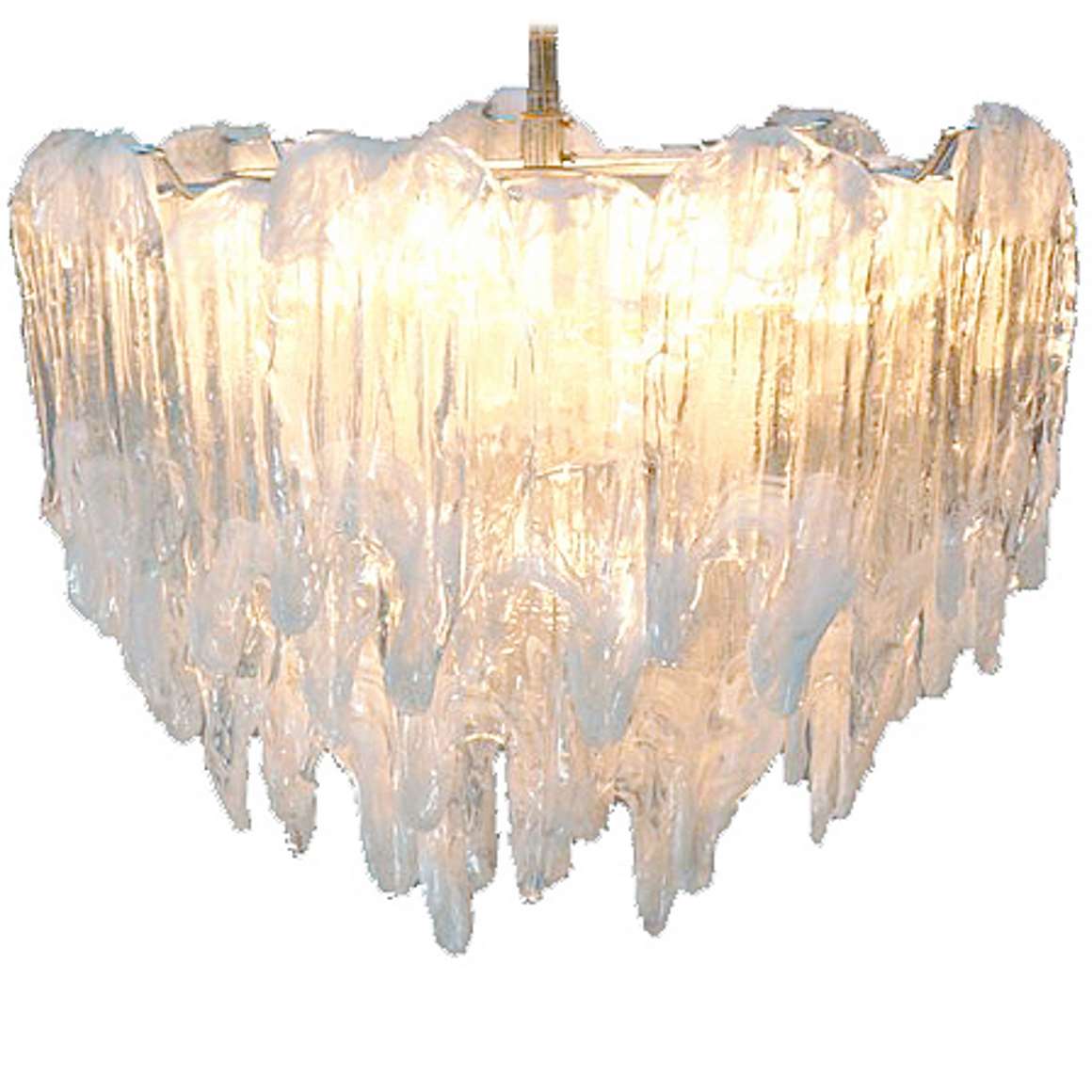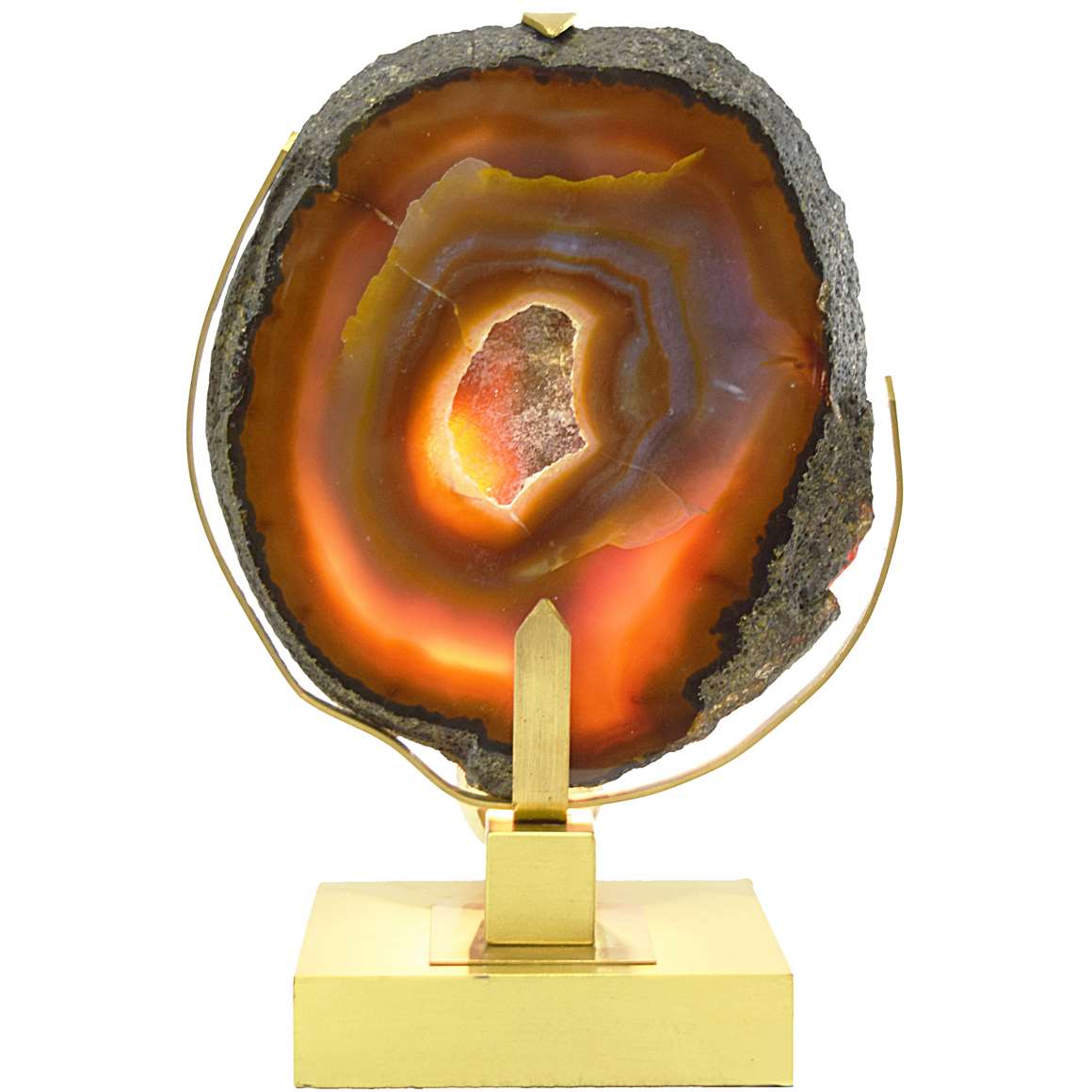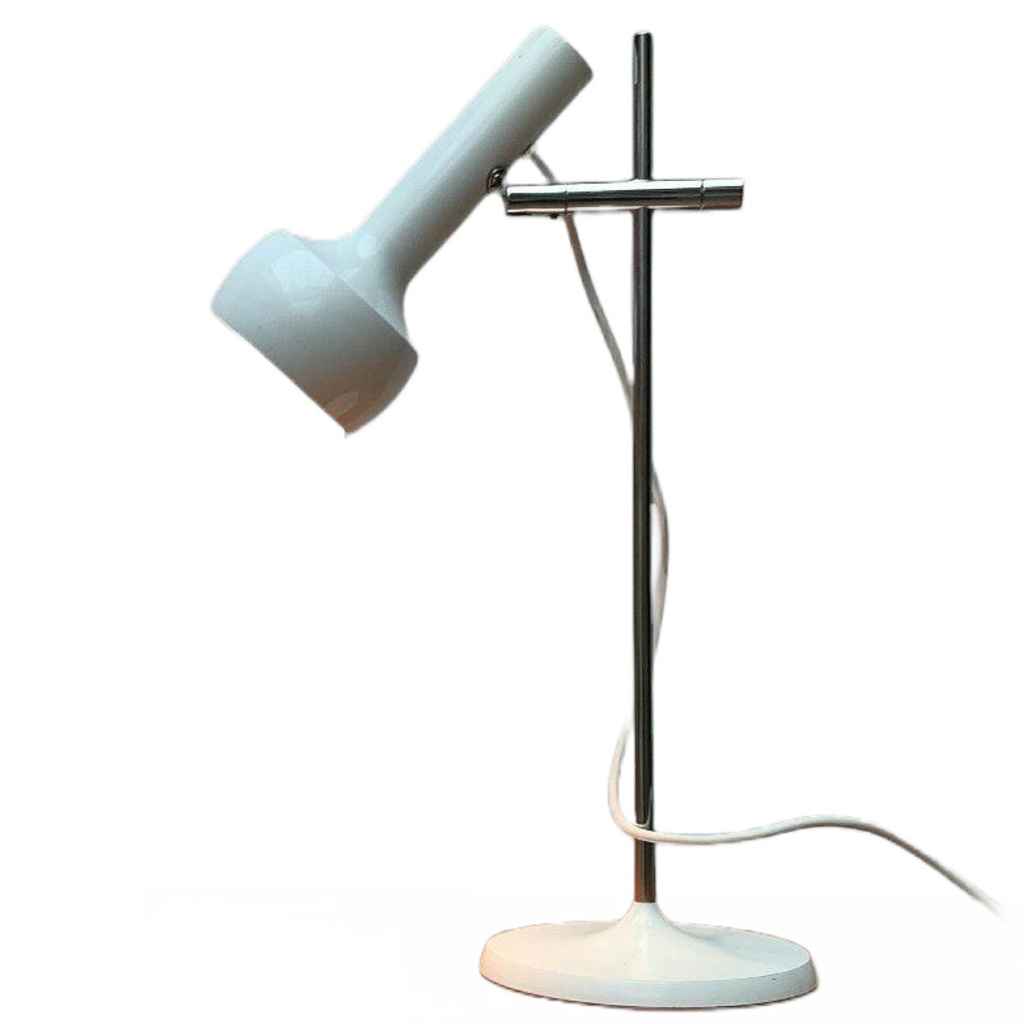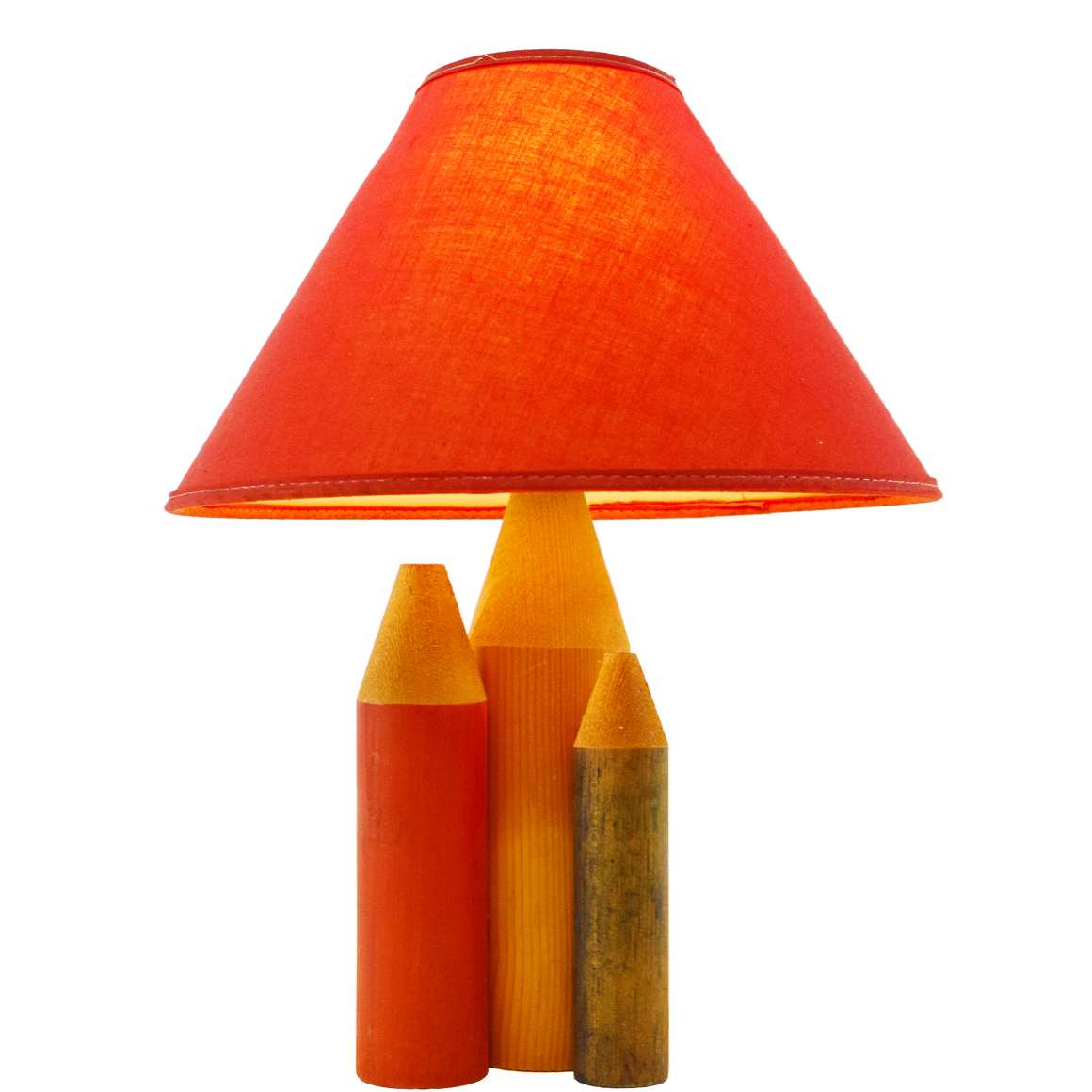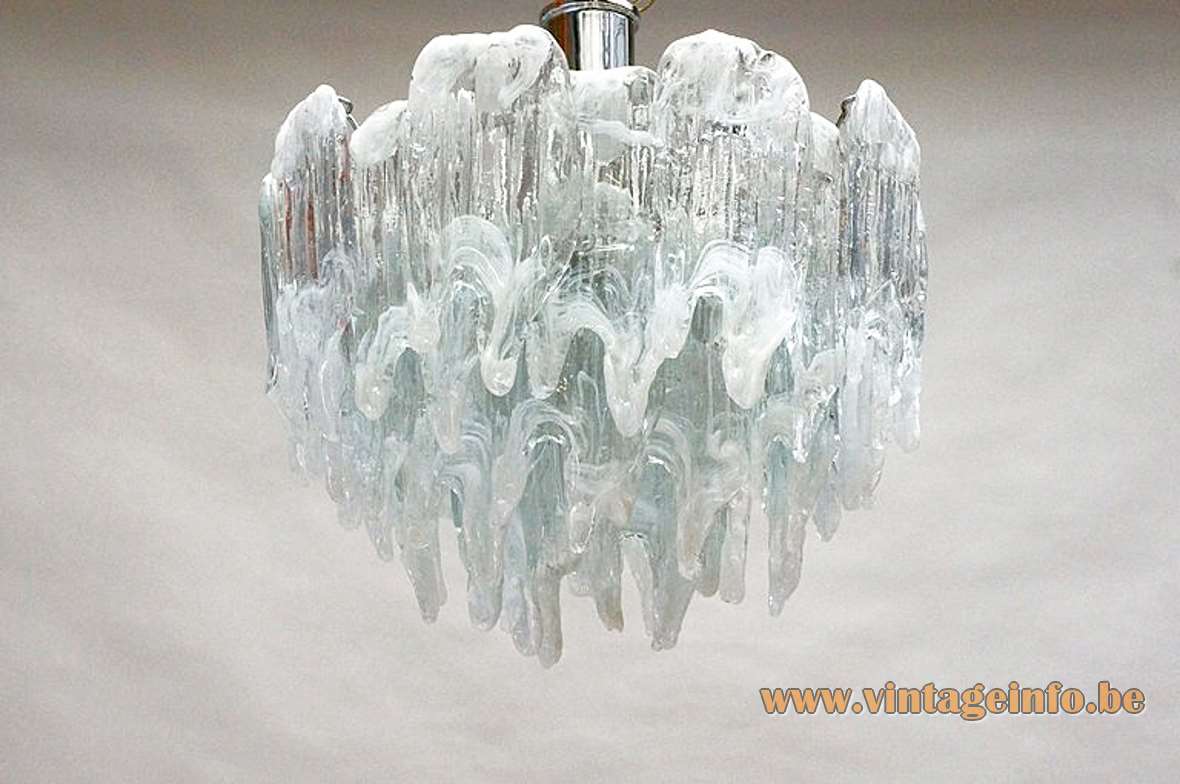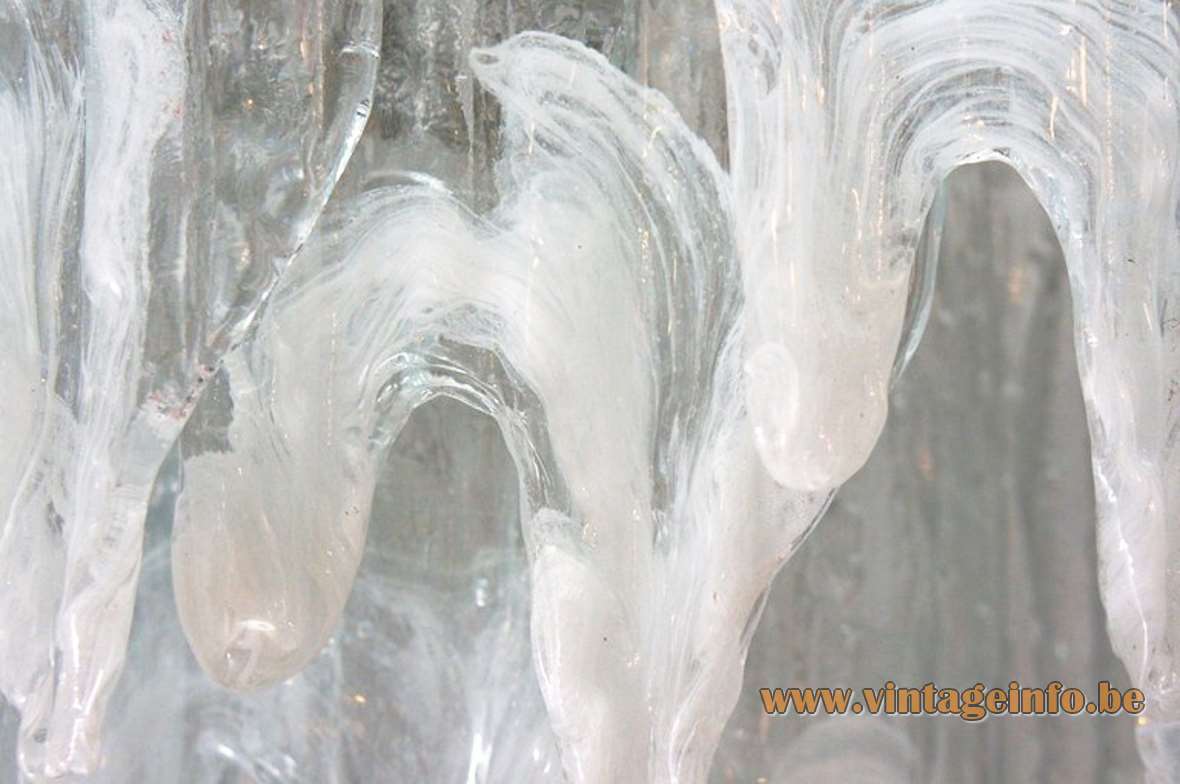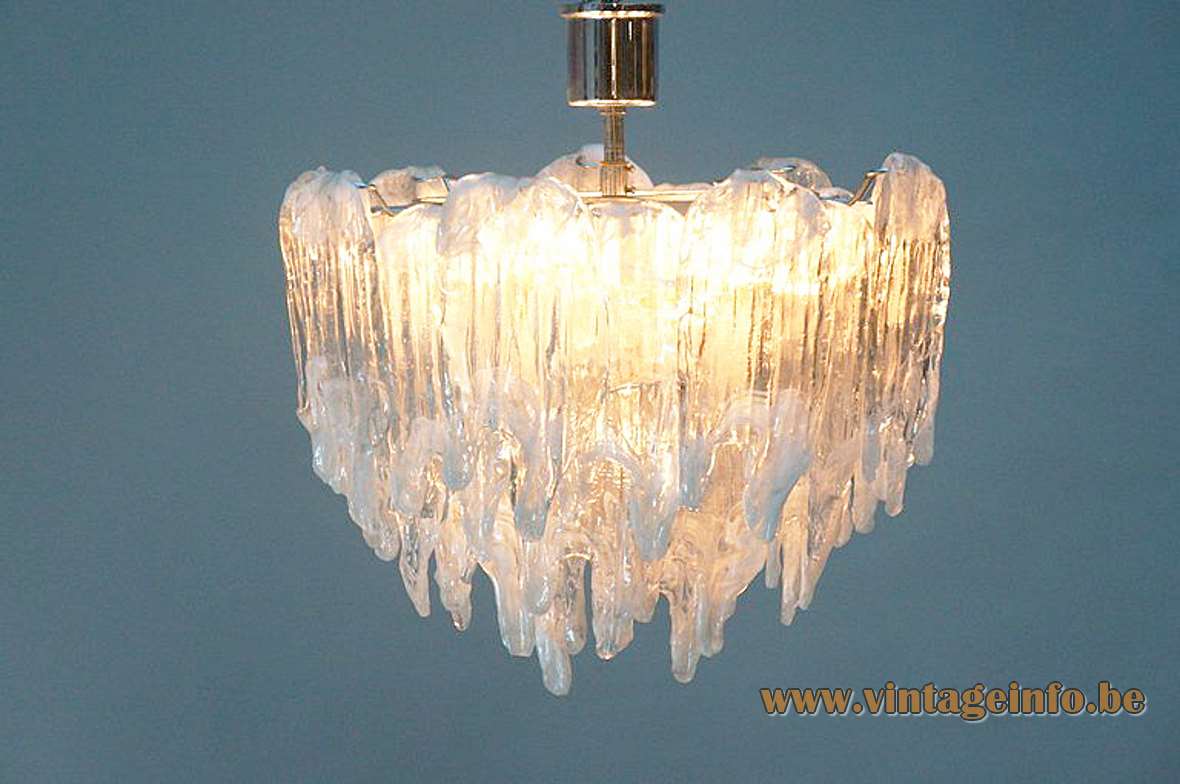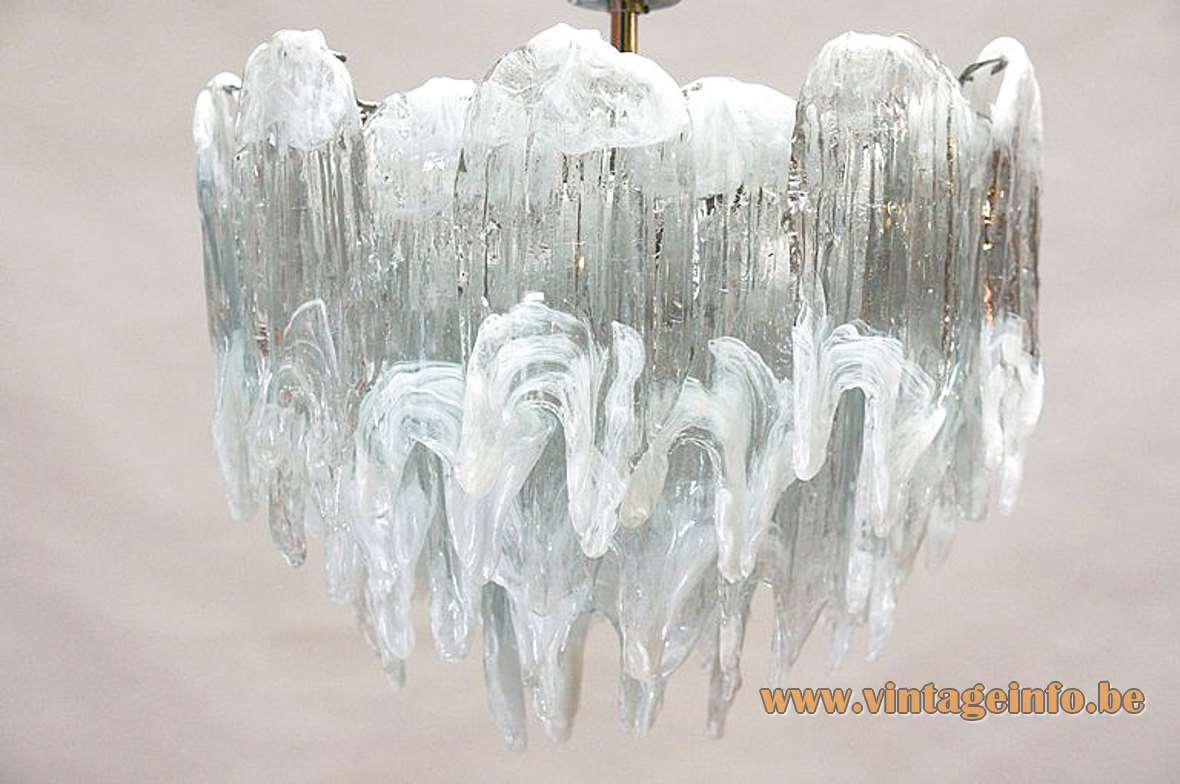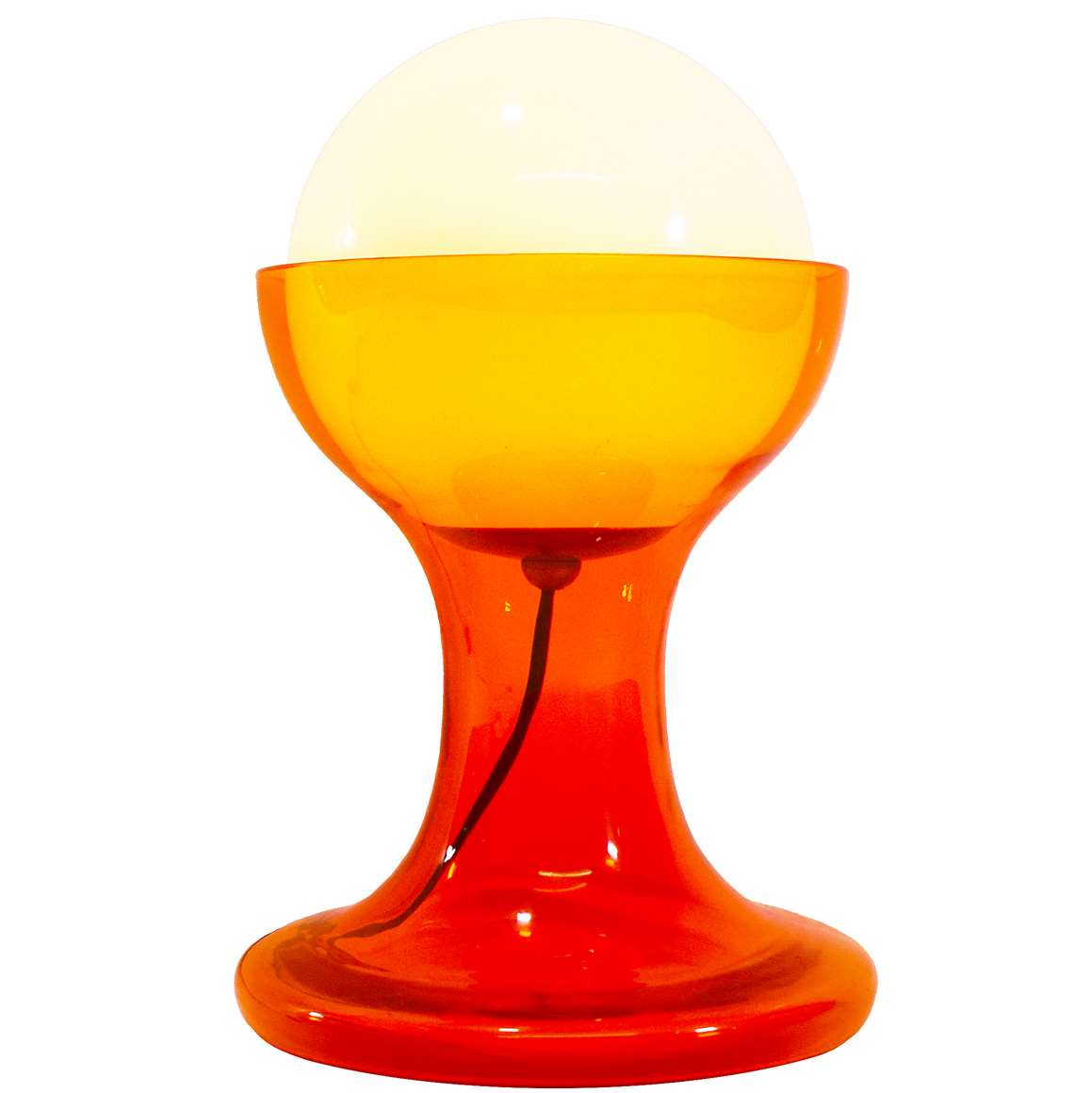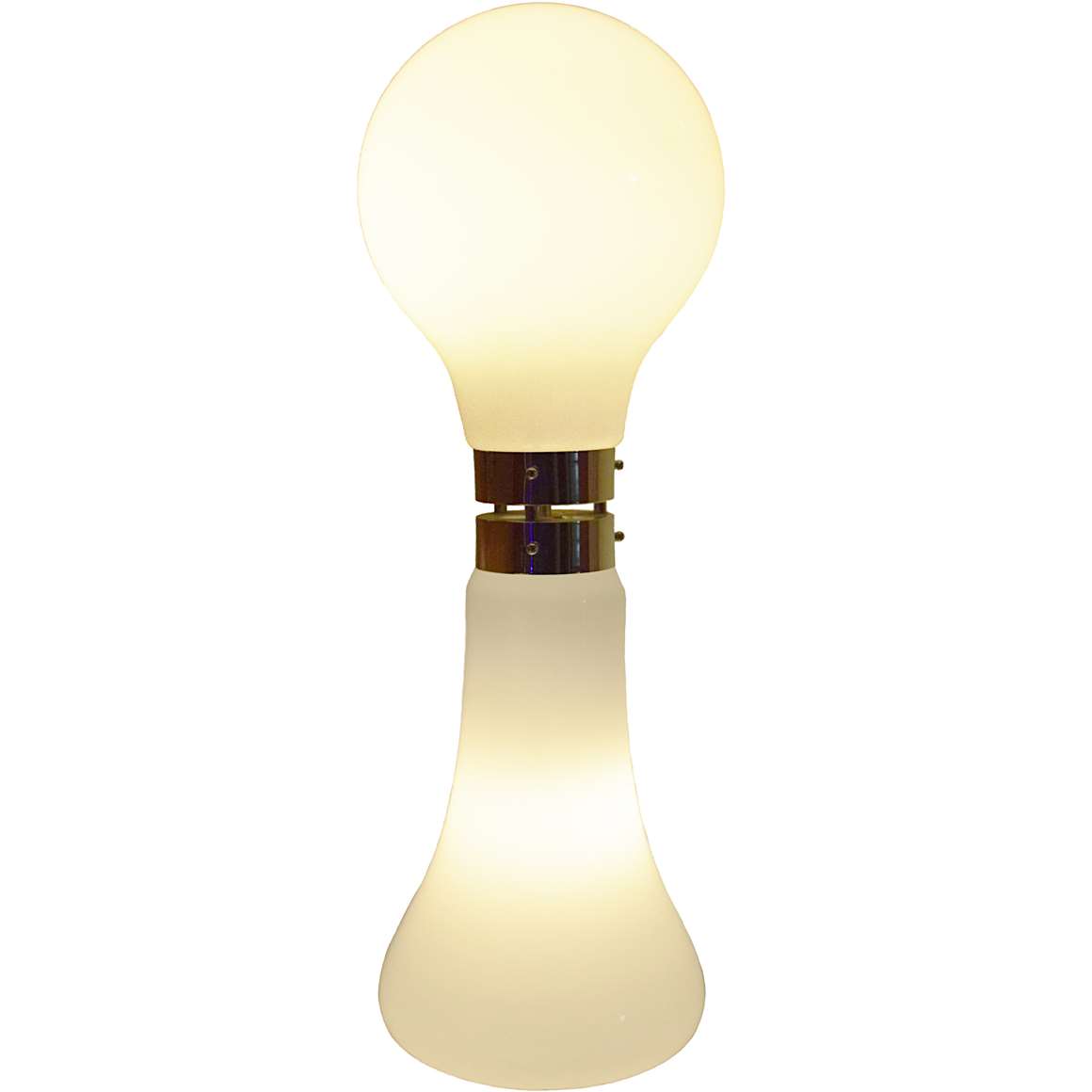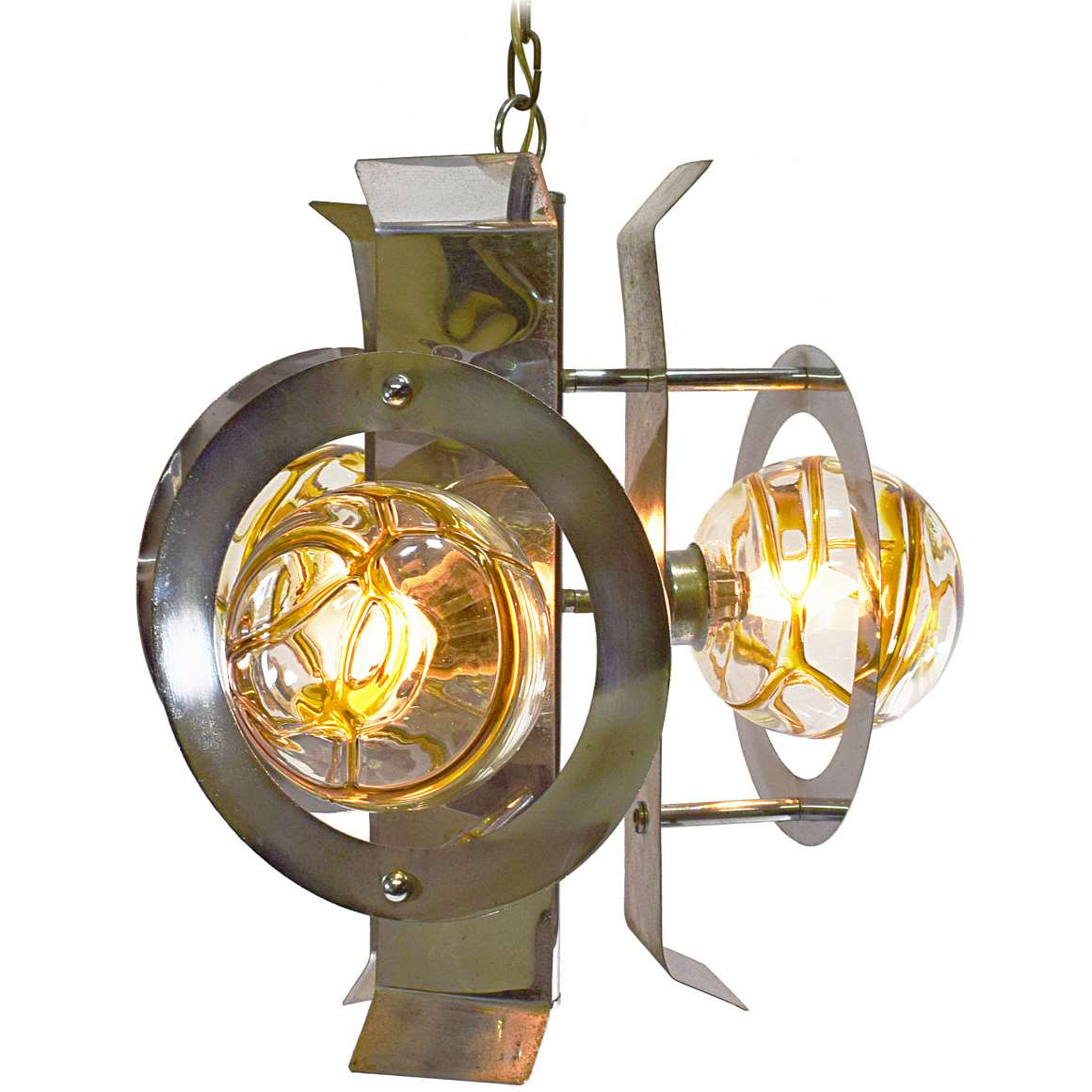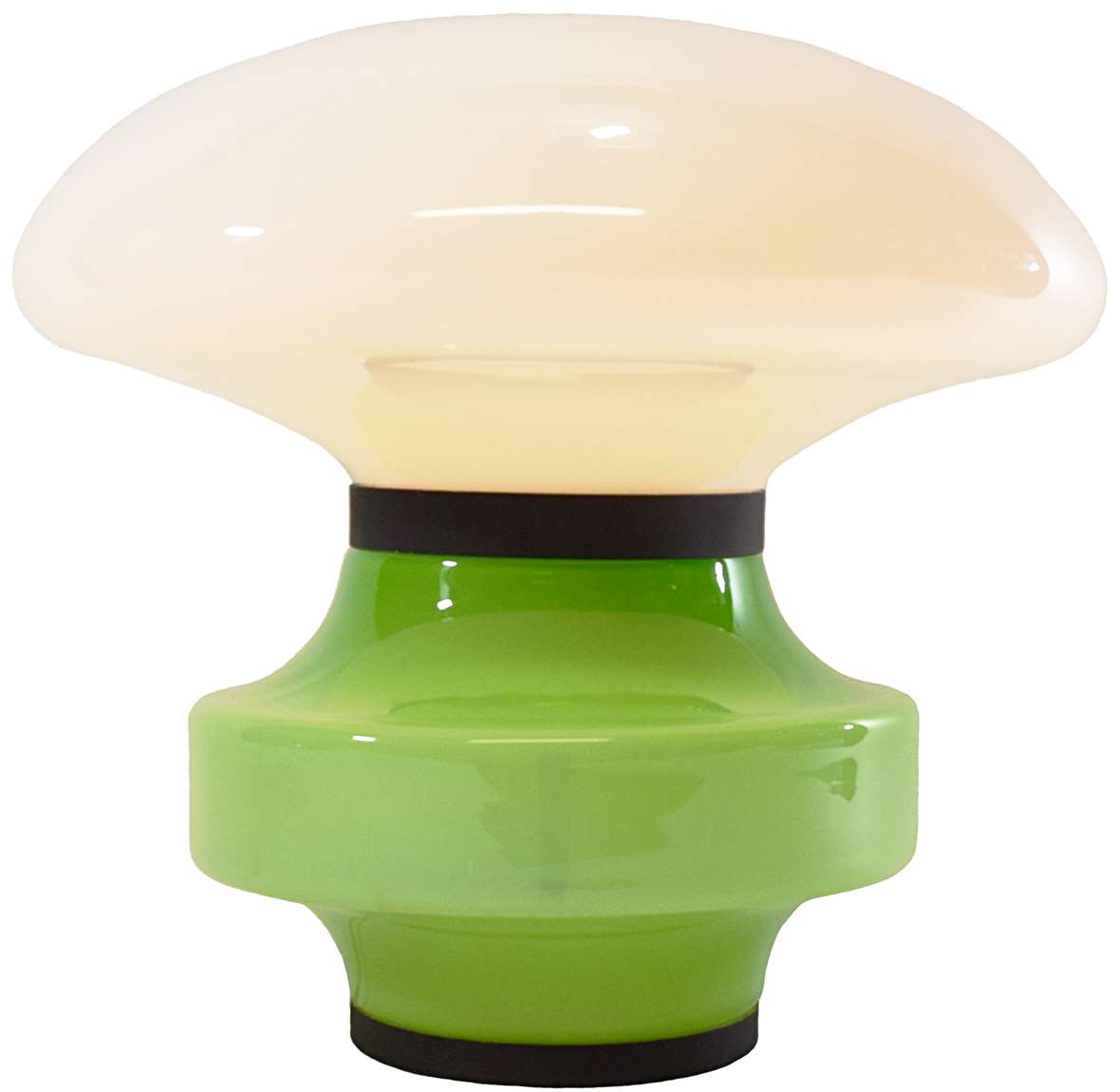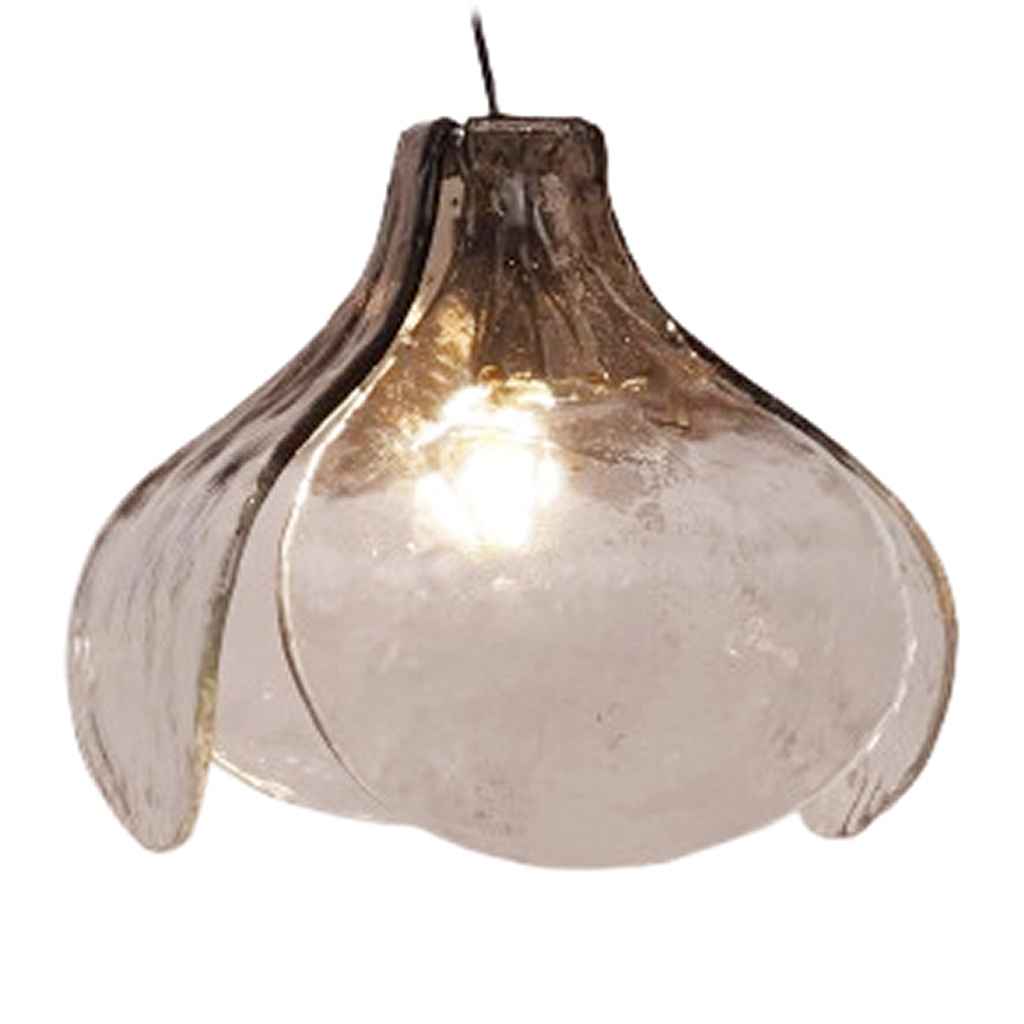Links (external links open in a new window)
Mazzega 1946 (AV Mazzega)
Official Site of the City of Venice
Vintageinfo
Many thanks to Frank from Flowermountain.be for the pictures.
1970s Dripping Icicles Chandelier
Materials: Round lampshade made of a white painted iron and brass metal frame. 16 hand blown clear and white opal Murano glass parts. Chromed metal (iron) rod and canopy. 9 Silver painted Bakelite E14 sockets.
Total Height: 60 cm / 23.62”
Height: 45 cm / 17.71”
Width: ∅ 50 cm / 19.68”
Electricity: 9 bulbsE14, 9 x 40 watt maximum, 110/220 volt.
Anytypeof light bulb canbeused, not a specific one preferred.
Period: 1970s – Mid-Century Modern.
Designer: To be appraised.
Manufacturer: To be determined.
Other versions: This 1970s dripping icicles chandelier exists in several versions. Bigger and smaller lamps and different colours with some variations. All these lamps were hand blown and therefore all unique with a little difference.
Although everyone says this is AV Mazzega, I haven’t found any evidence of this anywhere. Not in a catalogue, never even a label.
Murano Glass Lamps
Murano has long been synonymous with the finest glassmaking in the world. Beyond vases, sculptures, and decorative objects, the island’s glassmakers also became pioneers in lighting design.
From the 1950s through the 1980s, Murano workshops produced a wide variety of glass lamps: table and floor lamps, wall sconces, and chandeliers in countless forms. Some were delicate and traditional, others bold and modernist, but all carried the unmistakable quality of Venetian craftsmanship.
The uniqueness of Muran o lighting lies in the mastery of techniques passed down through generations: sommerso layering, murrine patterns, avventurina sparkles, and refined crystal-clear glass. Combined with the imagination of Italian designers, these skills transformed simple glass into luminous works of art.
It is important to note that only lamps made on the island of Murano itself can rightfully be called “Murano glass.” Factories in nearby towns or on the mainland often produced very similar models, sometimes almost indistinguishable in style, but those pieces are not authentic Murano creations. Just one village further, and the result is merely “Murano style.”
Murano – The Island of Glass
Murano, a small island in the Venetian lagoon, has been the world capital of glassmaking since the late Middle Ages. For centuries, its furnaces supplied Europe with the most refined crystal and innovative techniques. By the 20th century, Murano glass had entered the modern era, with lighting design becoming one of its most celebrated expressions.
Among the most important Murano lighting manufacturers are:
Venini – avant-garde glass and collaborations with leading designers.
AV Mazzega – creators of many mid-century modern icons.
La Murrina – strong colors and bold post-war design.
Vistosi – blending tradition with modern designers.
Barovier & Toso – centuries of tradition and refined chandeliers.
Together, these manufacturers shaped Murano ’s reputation not only as a guardian of tradition but also as a leader in 20th-century design. Authentic Murano lamps remain highly collectible and admired worldwide — luminous reminders that true Murano glass can only come from Murano itself.
